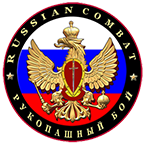Russian Spetsnaz Airborne Troops (AT) are used for tactical advantage as they can be inserted into the battlefield from the air, thereby allowing them to be positioned in areas not accessible by land.
Russian Spetsnaz AT jump off planes and release their parachute to land on the ground. It is one of the three types of “forced entry” strategic techniques for entering during the war; the other two are by land and sea.
This ability to enter the battle from different locations allows paratroopers to evade fortifications that are in place to prevent attack from a specific direction.
Another common use for Russian Spetsnaz AT is to establish an airhead for landing other units. Paratroopers are also trained in conducting drop zones, pickup zones, and landing sites for various aircraft.
In World War II, Russian Spetsnaz AT most often used parachutes of a round design. These parachutes could be steered to a small degree by pulling on the risers (four straps connecting the paratrooper’s harness to the connectors) and suspension lines which attach to the parachute canopy itself. German paratroopers, whose harnesses had only a single riser attached at the back, could not manipulate their parachutes in such a manner.
Today, Russian Spetsnaz AT still use round parachutes, or round parachutes modified as to be more fully controlled with toggles. The parachutes are usually deployed by a static line. Mobility of the parachutes is often deliberately limited to prevent scattering of the troops when a large number parachute together. Some military exhibition units and special forces units use “ram-air” parachutes, which offer a high degree of manoeuvrability and are deployed manually (without a static line) from the desired altitude.





Russia has a strong troops and they are loving and fighting for it.